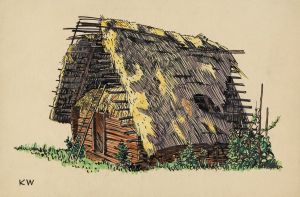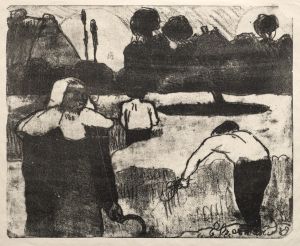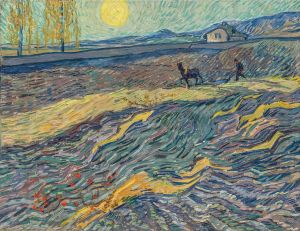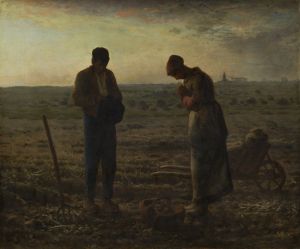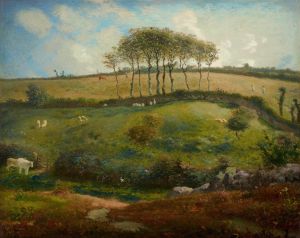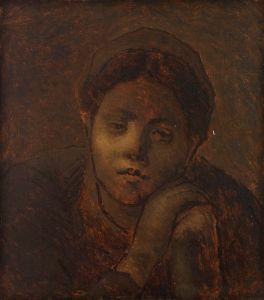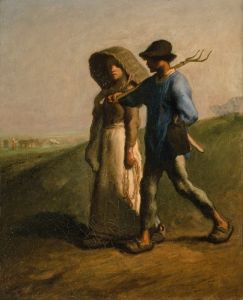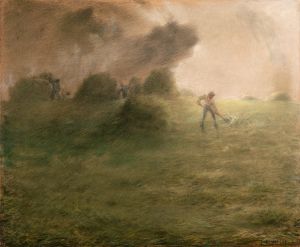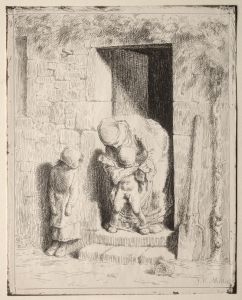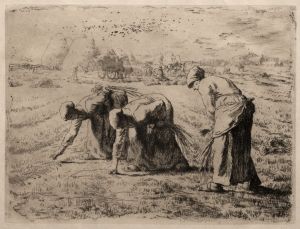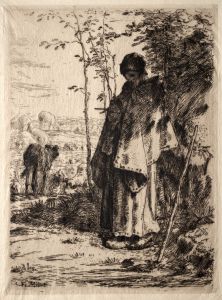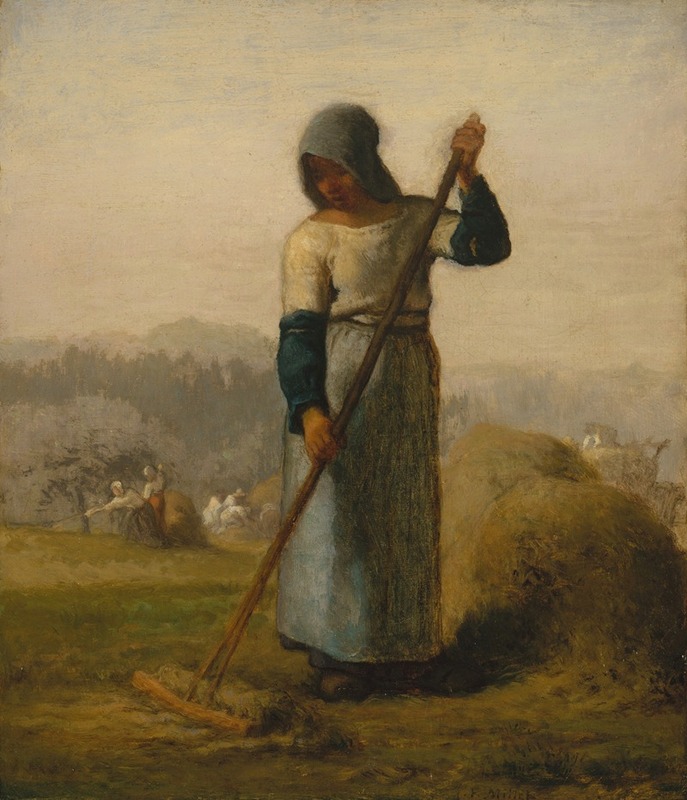
Woman with a Rake
A hand-painted replica of Jean-François Millet’s masterpiece Woman with a Rake, meticulously crafted by professional artists to capture the true essence of the original. Each piece is created with museum-quality canvas and rare mineral pigments, carefully painted by experienced artists with delicate brushstrokes and rich, layered colors to perfectly recreate the texture of the original artwork. Unlike machine-printed reproductions, this hand-painted version brings the painting to life, infused with the artist’s emotions and skill in every stroke. Whether for personal collection or home decoration, it instantly elevates the artistic atmosphere of any space.
Jean-François Millet, a prominent French painter and one of the founders of the Barbizon school, is well-known for his depictions of peasant life and rural landscapes. Among his numerous works, "Woman with a Rake" is a notable piece that exemplifies his focus on the dignity and labor of rural workers. Although specific details about this painting are not as widely documented as some of his other works, it remains an important part of his oeuvre, reflecting his thematic interests and artistic style.
Millet was born in 1814 in the village of Gruchy, Normandy, into a family of farmers. This background deeply influenced his artistic vision, as he often drew inspiration from the rural environment and the everyday lives of peasants. His works are characterized by a realistic portrayal of rural life, often imbued with a sense of solemnity and respect for the subjects he depicted.
"Woman with a Rake" is consistent with Millet's thematic focus on agricultural laborers. In this painting, Millet captures a female figure engaged in the act of raking, a common agricultural task. The composition likely emphasizes the physicality and endurance required in such labor, reflecting Millet's admiration for the resilience and strength of rural workers. The painting is executed with Millet's characteristic use of earthy tones and a subdued palette, which enhances the realism and gravity of the scene.
Millet's technique often involved a careful balance between detailed representation and a more generalized, almost monumental treatment of his subjects. This approach can be seen in "Woman with a Rake," where the figure is rendered with a sense of weight and presence, yet without excessive detail that might detract from the overall impression of the scene. The background, typically understated in Millet's works, serves to place the figure within a broader rural context, emphasizing the connection between the individual and the land.
The significance of "Woman with a Rake" lies not only in its artistic qualities but also in its reflection of the social and economic conditions of 19th-century France. During this period, the country was undergoing significant changes, with industrialization and urbanization altering traditional rural life. Millet's work, including this painting, can be seen as a response to these changes, highlighting the enduring importance and dignity of agricultural labor even as society evolved.
Millet's influence extended beyond his lifetime, impacting both his contemporaries and later generations of artists. His focus on rural themes and the human condition resonated with the Realist movement and later influenced Impressionists and other modern artists. "Woman with a Rake," like many of his works, continues to be appreciated for its artistic merit and its poignant portrayal of rural life.
In summary, "Woman with a Rake" by Jean-François Millet is a significant work that embodies the artist's dedication to depicting the lives of rural workers with dignity and respect. Through his realistic style and thematic focus, Millet offers a window into the world of 19th-century French peasants, capturing both the physical demands and the inherent nobility of their labor.





